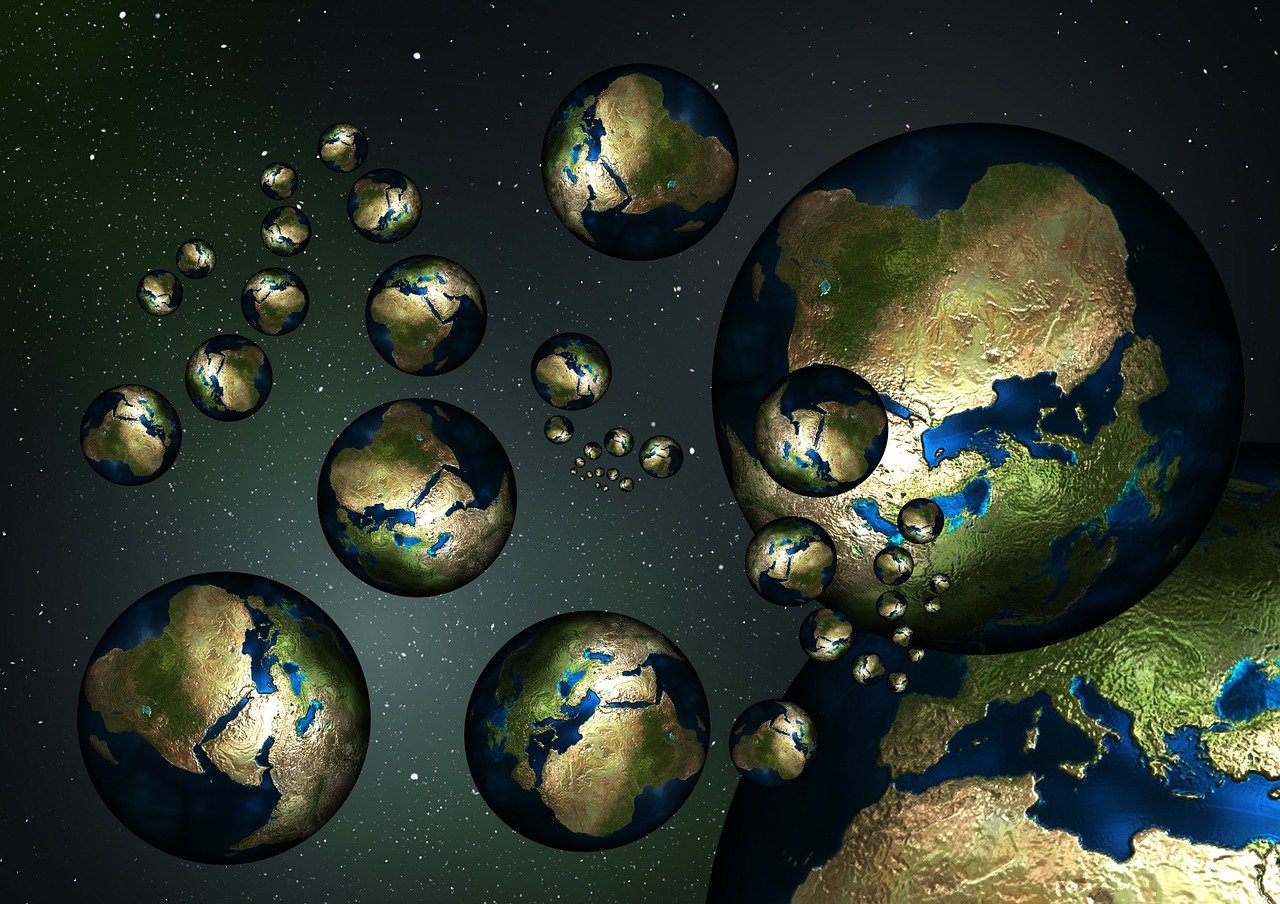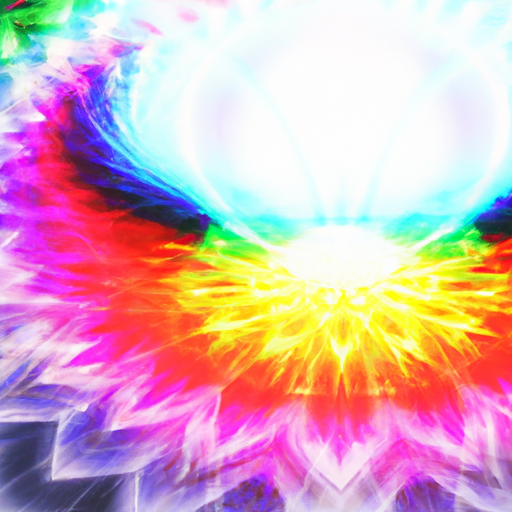Have you ever wondered if there are multiple versions of you, living different lives in parallel universes? Well, the concept of multiverse theory explores this mind-boggling idea, suggesting that our universe may be just one of many. This article takes a closer look at the intriguing concept of multiverse theory and poses the question: are we truly living in a parallel universe? Get ready to explore the possibilities and expand your understanding of our existence.
The Concept of Multiverse Theory
Definition of Multiverse Theory
Multiverse Theory, as the name suggests, is a scientific concept that proposes the existence of multiple universes, collectively referred to as the “multiverse.” According to this theory, our own universe is just one of countless other universes that exist simultaneously. These parallel universes may have different laws of physics, dimensions, and even fundamental constants. In essence, the multiverse theory suggests that our reality is just a small part of a much larger and diverse cosmos.
Origins of Multiverse Theory
The idea of a multiverse has been present in various forms throughout history, with early interpretations rooted in ancient philosophy. However, it wasn’t until the 20th century that the concept gained prominence in scientific discourse. The development of quantum physics and advancements in cosmology played a crucial role in shaping the modern understanding of the multiverse. Theoretical physicists and cosmologists began contemplating the idea of multiple universes in an attempt to explain certain perplexing phenomena that could not be accounted for within the confines of a single universe.
Different Types of Multiverse Theory
Multiverse theories can be classified into several categories based on their underlying principles and hypotheses. The three primary types of multiverse theories are the Bubble Multiverse, the Many Worlds Interpretation, and the Landscape Multiverse. The Bubble Multiverse suggests the existence of an infinite number of bubble-shaped universes, each with its distinct set of physical laws. On the other hand, the Many Worlds Interpretation proposes that every possible outcome of a quantum event exists in a separate universe. Lastly, the Landscape Multiverse, derived from string theory, posits the existence of a vast landscape of universes, each with different fundamental constants and particle properties.
Evidence for Multiverse Theory
Cosmic Microwave Background Radiation
One of the compelling pieces of evidence supporting the multiverse theory is the cosmic microwave background radiation (CMBR). The CMBR is the afterglow of the Big Bang, and its uniformity across the observable universe poses a challenge to traditional cosmological models. Proponents of the multiverse theory argue that this uniformity can be explained by the existence of other universes that underwent inflationary expansion and then merged with our own, smoothing out any irregularities.
Inflationary Theory
The inflationary theory, which proposes that the universe underwent a rapid expansion phase shortly after the Big Bang, also provides evidence for the multiverse. According to this theory, the universe expanded exponentially, resulting in the formation of multiple “bubble” universes. These bubbles, each with its unique set of physical laws, could explain the vast diversity observed in our universe.
Quantum Physics
Quantum physics, the branch of physics that deals with the behavior of matter and energy at the smallest scales, also lends support to the multiverse theory. The principles of quantum mechanics suggest that all possible outcomes of a quantum event occur simultaneously, each in its separate universe. This interpretation, known as the Many Worlds Interpretation, implies the existence of an intricate web of parallel universes, where every conceivable outcome of quantum events is actualized.

Parallel Universes in Science Fiction
Parallel Universe in Literature
Parallel universes have long captivated the imagination of writers and have been a recurring theme in literature. Authors like H.G. Wells, Philip K. Dick, and Michael Crichton have explored the concept of parallel universes in their works, weaving intricate narratives that blur the boundaries between reality and fiction. These literary representations of parallel universes often serve as a vehicle to explore philosophical and existential questions, offering readers an alternative perspective on reality.
Parallel Universes in Movies and TV Shows
Parallel universes have also made their way into popular culture through movies and TV shows. Countless science fiction films like “The Matrix,” “Interstellar,” and “Inception” depict characters navigating alternate realities and parallel dimensions. TV shows such as “Stranger Things” and “Fringe” delve into the mysteries of parallel worlds, showcasing the endless possibilities and potential consequences that arise from their existence. These visual narratives not only entertain but also fuel our fascination with the unknown and the boundless nature of the multiverse.
Popularity and Impact of Parallel Universes in Science Fiction
The concept of parallel universes has undeniably left a lasting impact on science fiction. It serves as a rich source of storytelling, allowing creators to explore complex themes and push the boundaries of imagination. Parallel universes offer an escape from conventional rules and norms, presenting infinite possibilities to both creators and consumers of science fiction. The popularity of such narratives reflects our innate curiosity about the mysteries of existence, as we yearn to explore possibilities beyond the confines of our own reality.
Theoretical Physics and Multiverse Theory
String Theory and Multiverse
String theory, a theoretical framework that attempts to reconcile quantum mechanics and general relativity, has emerged as a possible avenue for understanding the multiverse. According to string theory, the fundamental building blocks of the universe are incredibly tiny particles called strings. These strings vibrate at different frequencies, giving rise to various particles and forces. Within the framework of string theory, it is believed that the multiverse exists as a consequence of the complex interactions between strings, allowing for the existence of multiple universes with distinctive properties.
Many Worlds Interpretation
The Many Worlds Interpretation, a concept derived from quantum physics, proposes that every possible quantum outcome is realized in a separate universe. In each of these parallel worlds, the wave function of quantum systems collapses into a different state, resulting in distinct physical realities. The Many Worlds Interpretation provides a foundational framework for understanding the existence of parallel universes, suggesting that our universe exists alongside countless others, each unfolding along its unique timeline.
Holographic Principle
The holographic principle, derived from a combination of string theory and black hole physics, puts forth the idea that our three-dimensional universe can be mathematically described by a two-dimensional surface. This concept suggests that the information and properties of our universe are projected from this two-dimensional “holographic” boundary. The holographic principle has intriguing implications for the multiverse theory, hinting at the possibility that our reality is just a projection from a higher-dimensional space that encompasses multiple universes.

Criticism and Debates Surrounding Multiverse Theory
Lack of Direct Evidence
One of the primary criticisms of the multiverse theory is the lack of direct empirical evidence. Since parallel universes, by definition, exist beyond our observable reach, confirming their existence is a significant challenge. Critics argue that without concrete evidence, the multiverse theory remains speculative and falls short of meeting the rigorous standards of scientific inquiry. Despite this criticism, proponents of the theory maintain that indirect evidence and theoretical frameworks provide substantial support for the existence of parallel universes.
Falsifiability and Scientific Method
Another point of contention surrounding the multiverse theory is its falsifiability. Falsifiability refers to whether a scientific theory can be tested and potentially proven false. Critics argue that the multiverse theory, in its current form, lacks the ability to be experimentally tested, making it difficult to assess its validity within the framework of the scientific method. However, defenders of the multiverse theory argue that advancements in technology and novel observational techniques may one day provide avenues for testing the theory.
Occam’s Razor and the Complexity of Multiverse Theory
The concept of Occam’s Razor, a principle that suggests simpler explanations are generally preferable, has been invoked in discussions surrounding the multiverse theory. Critics argue that the multiverse theory introduces unnecessary complexity and convoluted explanations to account for phenomena that could potentially be explained within the confines of a single universe. However, supporters of the multiverse theory contend that Occam’s Razor should not dictate scientific inquiry, as it fails to account for the complexity inherent in the nature of reality.
The Anthropic Principle
Definition and Implications
The Anthropic Principle is a philosophical idea that asserts that any observations made about the universe must be compatible with the existence of conscious observers. In the context of the multiverse theory, the Anthropic Principle highlights the notion that our cosmos, among numerous others, is conducive to the existence of intelligent life. This principle suggests that the fundamental properties and laws governing our universe are finely tuned to allow for the emergence of life, providing an explanation for the apparent “fine-tuning” observed in our reality.
Weak Anthropic Principle
The Weak Anthropic Principle posits that the existence of intelligent life is a direct consequence of the fundamental properties of the universe. According to this principle, any universe capable of supporting life will inevitably have observers within it. The Weak Anthropic Principle offers a possible explanation for why our universe appears to be tailor-made for life, as it suggests that our existence necessitates the existence of a universe compatible with life.
Strong Anthropic Principle
In contrast to the Weak Anthropic Principle, the Strong Anthropic Principle suggests that the existence of intelligent life actively influences the fundamental properties of the universe. According to this principle, our universe must possess the necessary conditions for the emergence and sustenance of observers. The Strong Anthropic Principle implies that the existence of life plays a pivotal role in shaping the nature of reality, leading to questions regarding determinism, free will, and the nature of our universe.

Experiments and Observations
Large Hadron Collider Experiments
Experimental physicists have sought to uncover evidence for the multiverse through experiments conducted at the Large Hadron Collider (LHC). The LHC, the world’s most powerful particle accelerator, allows researchers to study the fundamental properties of matter at energies previously unattainable. Although the LHC experiments have not directly detected parallel universes, they have provided valuable data that could potentially shed light on the existence of additional dimensions and hidden sectors of the multiverse.
Cosmic Ray Observations
Cosmic rays, high-energy particles originating from outer space, offer another avenue for exploring the multiverse. Astronomers and physicists have been studying cosmic rays to investigate deviations from expected patterns, which could indicate interactions with parallel universes. By analyzing the energy and direction of cosmic rays, scientists hope to uncover anomalies that may provide indirect evidence for the existence of parallel worlds.
Detecting Gravitational Waves
The detection of gravitational waves, ripples in the fabric of spacetime, has opened up new possibilities for understanding the multiverse. Gravitational wave observatories, such as the Laser Interferometer Gravitational-Wave Observatory (LIGO) and the future Laser Interferometer Space Antenna (LISA), enable scientists to observe the universe in an entirely different way. These observatories can potentially detect gravitational waves generated by cataclysmic events in parallel universes, providing a means to indirectly confirm the existence of parallel realities.
Philosophical Implications of the Multiverse Theory
The Nature of Reality
The multiverse theory has profound implications for our understanding of reality. If multiple universes do indeed exist, each with its own set of physical laws and properties, it challenges our perception of a unified and singular reality. The notion that our universe may be just one among an infinite number of parallel universes raises questions about the nature of existence and the boundaries of our knowledge. The multiverse theory invites us to reconsider traditional notions of reality, pushing the boundaries of our philosophical and scientific discourse.
Determinism versus Free Will
The existence of parallel universes raises questions about determinism and free will. If every possible outcome of quantum events is realized in separate universes, it prompts the consideration of whether our choices and actions are predetermined or if we possess genuine free will. The multiverse theory adds a layer of complexity to the age-old debate of determinism versus free will, challenging us to reevaluate our understanding of causality and the nature of human agency.
The Existence of Other Intelligent Life
One of the most intriguing philosophical implications of the multiverse theory is the possibility of the existence of other intelligent life forms in parallel universes. If our universe is just one among many, it stands to reason that other universes may harbor civilizations that have developed under entirely different circumstances. The multiverse theory expands our perspective on the potential for extraterrestrial life, raising existential questions about our place in the cosmos and the diversity of intelligent beings that may exist beyond our comprehension.

Religious and Cultural Perspectives on the Multiverse Theory
The Multiverse Theory and Religious Beliefs
The multiverse theory has both resonated with and challenged various religious beliefs. Some religious traditions find compatibility with the concept of the multiverse, as it expands the grandeur and diversity of God’s creation. For instance, the idea of parallel universes aligns with the concept of a God who manifests Himself in infinite ways across multiple realities. On the other hand, the multiverse theory can also pose a challenge to certain religious doctrines that emphasize a singular and exclusive reality. The interplay between the multiverse theory and religious beliefs is a complex and nuanced topic, sparking contemplation and dialogue among scholars and believers.
Different Cultural Views on Parallel Universes
Cultural perspectives on parallel universes vary across different societies and traditions. Some cultures, such as the indigenous traditions of the Americas and certain African beliefs, have long embraced the idea of multiple realms or dimensions, echoing elements of the multiverse theory. In contrast, other cultures may have narratives or cosmologies that emphasize a singular universe or a hierarchical structure of existence. These diverse cultural perspectives enrich our exploration of the multiverse theory, offering alternative lenses through which to understand and interpret the concept.
The Multiverse Theory and Existential Questions
The multiverse theory, with its implications for the nature of reality and the existence of other intelligent beings, raises profound existential questions. It prompts contemplation on the meaning and purpose of existence, our place in the cosmos, and our interconnectedness with other potential universes or civilizations. The multiverse theory challenges us to confront philosophical and existential inquiries that have fascinated humanity for centuries, inviting us to expand our horizons and embrace the vastness of the unknown.
The Future of Multiverse Theory
Advancements in Technology and Research
As technology progresses and our understanding of the universe deepens, advancements in observational tools and theoretical frameworks will continue to shape the future of multiverse theory. The development of more powerful particle colliders, space-based observatories, and computational models will offer scientists new avenues for testing and exploring the concept of parallel universes. Technological breakthroughs in fields such as quantum computing, artificial intelligence, and astrophysics may contribute to further unraveling the mysteries of the multiverse.
Experimental Tests and Observations
The quest for experimental tests and observations to support or refute the multiverse theory remains an ongoing endeavor. Scientists are actively exploring novel approaches to detect tangible evidence of parallel universes. By refining existing experimental techniques and devising new ones, researchers hope to uncover unique signatures or anomalies that could be attributed to the presence of other universes. As observational capabilities improve, so too does the potential for developing strategies to directly probe the existence of parallel worlds.
Implications for Cosmology and Understanding the Universe
The multiverse theory has the potential to revolutionize our understanding of cosmology and our place in the universe. Exploring the properties and interactions between parallel universes may shed light on fundamental questions about the nature of space, time, and matter. The implications of the multiverse theory could extend beyond the field of physics, with potential impacts on philosophy, theology, and our perception of existence itself. Continued investigations into the multiverse theory have the potential to unlock profound new insights into the mysteries of the universe.
In conclusion, the concept of the multiverse theory opens up a vast landscape of possibilities, challenging our understanding of reality, expanding the boundaries of science, and sparking contemplation about our place in the cosmos. While the multiverse theory may currently lack direct empirical evidence, it is supported by a convergence of compelling theoretical frameworks, indirect observational data, and philosophical discourse. As technology advances and our knowledge deepens, further exploration of the multiverse theory promises to shape the future of cosmology, invite new scientific inquiries, and inspire continued awe and wonder in our quest to comprehend the mysteries of existence.